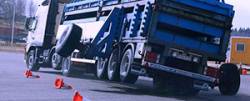 One of 12 magnetograms recorded at Greenwich Observatory during the Great Geomagnetic Storm of 1859
One of 12 magnetograms recorded at Greenwich Observatory during the Great Geomagnetic Storm of 1859 1996 soccer game in the Midwest, (Rick Dikeman image)
1996 soccer game in the Midwest, (Rick Dikeman image)
 Nouméa ground station after the flood
Nouméa ground station after the flood A pencil and a coffee cup show the size of NASA’s teeny tiny PhoneSat
A pencil and a coffee cup show the size of NASA’s teeny tiny PhoneSat Bonus Hotspot: Naro Tartaruga AUV
Bonus Hotspot: Naro Tartaruga AUV
 Pacific lamprey spawning (photo by Jeremy Monroe, Fresh Waters Illustrated)
Pacific lamprey spawning (photo by Jeremy Monroe, Fresh Waters Illustrated) “Return of the Bucentaurn to the Molo on Ascension Day”, by (Giovanni Antonio Canal) Canaletto
“Return of the Bucentaurn to the Molo on Ascension Day”, by (Giovanni Antonio Canal) Canaletto The U.S. Naval Observatory Alternate Master Clock at 2nd Space Operations Squadron, Schriever AFB in Colorado. This photo was taken in January, 2006 during the addition of a leap second. The USNO master clocks control GPS timing. They are accurate to within one second every 20 million years (Satellites are so picky! Humans, on the other hand, just want to know if we’re too late for lunch) USAF photo by A1C Jason Ridder.
The U.S. Naval Observatory Alternate Master Clock at 2nd Space Operations Squadron, Schriever AFB in Colorado. This photo was taken in January, 2006 during the addition of a leap second. The USNO master clocks control GPS timing. They are accurate to within one second every 20 million years (Satellites are so picky! Humans, on the other hand, just want to know if we’re too late for lunch) USAF photo by A1C Jason Ridder.  Detail of Compass/ BeiDou2 system diagram
Detail of Compass/ BeiDou2 system diagram Hotspot 6: Beluga A300 600ST
Hotspot 6: Beluga A300 600ST

1. RESCUE DRONE
Noordwijk, Netherlands
√ Inspired by the refugee crisis, Dutch start-up Avy has been working on robust, long-duration drones capable of detecting people in distress and, if necessary, dropping life jackets, life buoys, food and medicine. The rescue drone can take off from a boat or the shore, carrying among other items, a cylinder that contains a large deployable rescue buoy, which not only can keep refugees afloat but indicates its location to boats in the vicinity.
1. RESCUE DRONE
Noordwijk, Netherlands
√ Inspired by the refugee crisis, Dutch start-up Avy has been working on robust, long-duration drones capable of detecting people in distress and, if necessary, dropping life jackets, life buoys, food and medicine. The rescue drone can take off from a boat or the shore, carrying among other items, a cylinder that contains a large deployable rescue buoy, which not only can keep refugees afloat but indicates its location to boats in the vicinity.
The Avy Rescue is especially tailored to operate in emergency conditions for performing life-saving missions in support of search and rescue and for the management of disaster relief. In order to operate in these demanding scenarios, the drone possesses a powerful and complete sensor and communication package as well as a sturdy construction and operational flexibility, according to the company. The company is currently based at ESA’s Business Incubation Centre in Noordwijk, receiving technical and business advice.
2. UBER FOR BIKES
China
√ Bike-sharing is not new in China, but Chinese startups — including leaders like Mobike and Ofo — have reinvented the concept to make it even more efficient and these services have become very popular. The premise is simple: pedestrians looking for a ride can open their smartphones, unlock a bike parked nearby, hop on, and pay a fee once they arrive at their destination.
These bike-sharing startups allow their vehicles to be placed anywhere in the city as engineers have developed GPS-based apps that allow people to find nearby bikes, and charge based on how much time riders spend on them. Many people have taken up bike-sharing as a replacement for the subway, or even walking.
Some of the same technologies used to start up these services are now being implemented to improve efficiency as well as fight off user abuse by using GPS tracking services to encourage rider responsibility. One bike-sharing service now includes an updated brake box that contains a mechanical lock compatible with the integrated GPS system in the updated app, allowing app users to lock/unlock the bicycle under three seconds.
3. TRUCK DRIVERS OUTSIDE THE TRUCK
California
√ Trucking is the backbone of the American economy, moving a majority of freight. California-based startup Starsky Robotics is working to make trucks autonomous on the highway and remote controlled by drivers for the first and last mile. The plan is for these trucks to take advantage of the evolving GPS and navigation technologies to make roads safer while giving drivers meaningful work close to their homes and families. Starsky Robotics is approaching the autonomous space with an eye on keeping drivers employed and improving their lives.
Starsky is not building a self-driving truck that removes the driver from the vehicle altogether. Instead, it is building a retrofit kit that it said will keep drivers employed, just not in the truck. Currently they’re testing vehicles in Michigan, Nevada and Florida with drivers in the cab, but the company hopes to remove drivers from the cab during testing later this year. A vehicle has already moved a 5,000-pound load 140 miles, with 120 of those miles driven autonomously. It has also been tested successfully in a local yard moving trailers without a driver in the vehicle. Starsky’s tech is also looking to make an impact now, by using components and techniques that are currently available at prices which are palatable to truck purchasers and manufacturers.
4. ROBORACERS
Paris, France
√ Roborace showed off its self-driving Robocar on the city streets of Formula E’s Paris ePrix on May 20, 2017. The Robocar is the first driverless car on the streets of Paris. The driverless race car performed a demonstration for the crowds at Les Invalides in the French capital and wowed the fans with a successful showcase of its autonomous capabilities. The demonstration saw the car negotiate its way around 14 turns of the 1.9-kilometer circuit without a human in the vehicle entirely self-driven by autonomous software.
The Robocar is designed by Daniel Simon, the automotive futurist who creates vehicles for Hollywood sci-fi blockbusters including Tron Legacy and Oblivion, It weighs 1000 kilograms and measures 4.8 meters long and 2 meters wide. It has four motors of 300 kilowatts each, a 540 killowatt battery and is capable of speeds more than 200 mph. The car uses a number of technologies to “drive” itself including 5 LiDARs, 2 radars, 18 ultrasonic sensors, 2 optical speed sensors, 6 AI cameras, GNSS positioning and is powered by Nvidia’s Drive PX2 brain, capable of up to 24 trillion A.I. operations per second to be programmed by teams’ software engineers using complex algorithms, according to Roborace. Roborace’s open A.I. platform allows companies to develop their own driverless software and push the limits in an extreme and safe environment. The series is designed to be a competition of intelligence so all teams will use the same “Robocar” to ensure all efforts will be focussed on advancing the software for everyday road cars to adopt.





